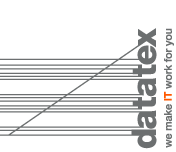
Textile in Italy. Opportunities and perspectives post-Covid
Interview with Vincenzo Cangioli – Ceo Lanificio Cangioli
 LANIFICIO CANGIOLI 1859 – Historical textile company headquartered in Prato, founded in 1859, Cangioli is today a Group with three production companies (Cangioli, Pentarif for dyeing and finishing, Manifattura Tessile Malaparte for weaving) and with four brands on the market (Lanificio Cangioli, Even More, Vallombrosa and Sushi-shirt).
LANIFICIO CANGIOLI 1859 – Historical textile company headquartered in Prato, founded in 1859, Cangioli is today a Group with three production companies (Cangioli, Pentarif for dyeing and finishing, Manifattura Tessile Malaparte for weaving) and with four brands on the market (Lanificio Cangioli, Even More, Vallombrosa and Sushi-shirt).
The Italian fashion-textile world is rising (sales +24% in the first half-year of 2021, restart of the exhibitions, growth of orders, new sales opportunities). We hope to be near the end of the tunnel. What is the legacy in the textile field of these 2 years of Covid emergency? Can we take stock of what happened? Are there some lesson we can learn? At the end of the tunnel, will we find the same old world, a completely different one or is there something in between these two solutions?
The Covid legacy – at present – is a very complex and chaotic phase, with an orders peak and a growth trend much higher than the expectations. However, this situation is accompanied by a “perfect storm”, with the disruption of global supply chains and with a price increase – often paired up with mistakes and delivery delays – of all raw materials, energy, logistics, and transports, and not on a single factor as it historically happens during a specific crisis.
I expected the demand increase, an initial peak, and a phase of overproduction for stock recovery, but I wasn’t expecting that this acceleration would have coincided with a phase of global chaos that transforms the present situation is something completely abnormal compared to the past.
The satisfaction for the great business opportunities that this restart is giving us, goes along with difficulties in orders and supplies management and with the concern for the evolution that this situation may have. We are working a lot, there is a lot of work to do but it is more and more complex and challenging.
Now it’s early to understand if the Italian and European textile companies will come out stronger and be able to expand from this unusal set of circumstances.. I believe that we would have to wait some time, at least till the end of 2023 or 2024, to understand how the textile world would have changed compared to the past. We are in the middle of this storm and at present it is premature to give an assessment or to take stocks.
Today sending a container from China to Italy costs 500% more than 2 years ago. Do you think that new opportunities for Italian and European textile manufacturers will open up? Could the phenomenon of textile production coming back to Europe really happen, thus reducing delocalization? Are we close to the great return of the European textile supply chain? Is globalization meant to reduce its importance in the textile sector or everything will come back as it was before?
Surely it is not convenient to purchase in Asia today, and this is a new and interesting fact that may give birth to important and lasting phenomena of European textile manufacturing reshoring.
But the conditional form is a mustbecause at present it is impossible to understand if and when the situation will go back to normal, if there will be a strong production reallocation from China towards the other Asian realities such as Vietnam and Bangladesh or if the European textile companies will experience new and unexpected growth.
Today we have surplus work, but this increased demand has to stabilize and consolidate overtime to convince me – as other Italian and European textile businessmen – to invest by adding production capacity. We will know it – as I said – in 2023 or 2024 because now we cannot know if we are going through a short-term trend or it is the initial phase of an epic revolution of the world textile supply chain.
That said, we cannot deny that in Italy, and Europe, we have the problem of acquiring the textile know-how and to train a new generation of workers in this sector.
The average age in Italian textile companies is very high, we cannot see a generation change soon and those – like us in Lanificio Cangioli – who still invest in the training of young people has to face the lack of training school path and learning offers devoted to the textile world.
Whenever we hope for a reshoring of textile manufacturers in Europe we have to keep in mind that this kind of phenomenon can work only if it goes along with significant investments in the textile training of young people, starting from schools.
Thinking about opening of new companies, textile startups in Europe, is too optimistic in my opinion, because we are talking about a sector where the initial investments required are very high and the time to start the activity is very long. On the other hand, we can realistically hope in a strengthening of the European textile companies that already exist, this is a complex topic on which we may have a clearer opinion in 2 years, not now.
Collections – Fashion: What are today’s trends? What is the most important and interesting news?
The concern for sustainability is increasing a lot and it represents the big current trend in the textile world.
This, as per itself, is surely good news, but there is a problem: besides thirty big world fashion brands that are investing in sustainability, at the bottom of the textile supply chain the majority of brands, and almost all when we talk about small-medium brands, that doonly greenwashing, which is a fake ecologism, superficial and used only for marketing and communication.
Instead, at the top of the supply chain many textile companies – especially spinning and weaving mills – are investing a lot in sustainability, with a concrete and expensive engagement. Lanificio Cangioli, has received all the main international Green Certifications and engage four people in our team that are busy full-time in sustainability related activity.
The problem is that quite often in the textile world we think that this kind of investment should be reabsorbed only by the top of the supply chain. I think that the textile industry should face the sustainability topic also at the bottom of the supply chain, otherwise this right and important struggle is meant to fail.
How has Datatex, with its solutions, improved the business management of Lanificio Cangioli? In particular, what added value has the management noticed in the sales, and production areas, in the relationship with suppliers and third parties, in the company data analysis, etc…? What added value has been noticed in the different operational areas by the direct users of the “Enterprise data management system”?
Two years after the Go-Live, I can say that Datatex software solutions had a deep impact on Lanificio Cangioli from an organizational point of view. There have been many difficulties at the beginning and the transition was not easy, also because it implied a non-trivial change in the company’s mentality and culture, but today I see that the benefits and advantages of this change are tangible and significant.
First of all, I speak about the benefits we had on the corporate operating margin, and surely the control of production flows and control of resource flows, but also the product traceability has greatly improved, with big advantages in terms of working with certified fibers certifications.
Moreover, the information for decision making is much more accurate today, precise, and coherent and helped us many times in making quick decisions in difficult times. The management figures have wider and more precise information today, and this has also improved a lot the decision making process within the company.

